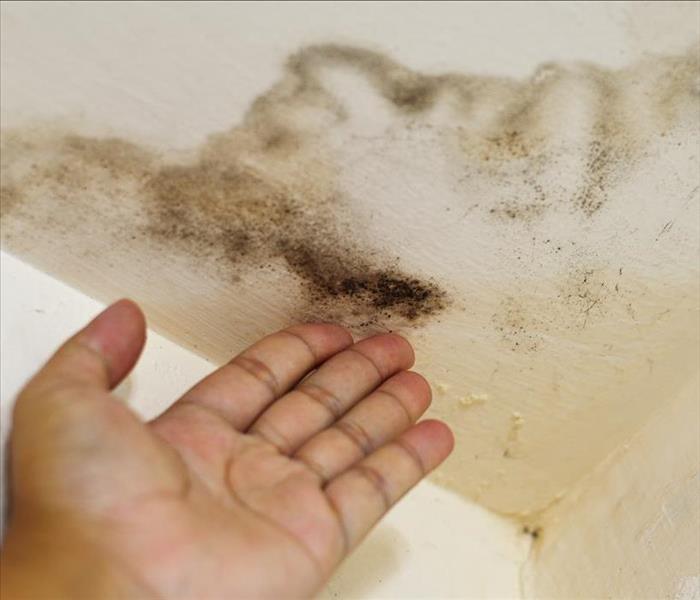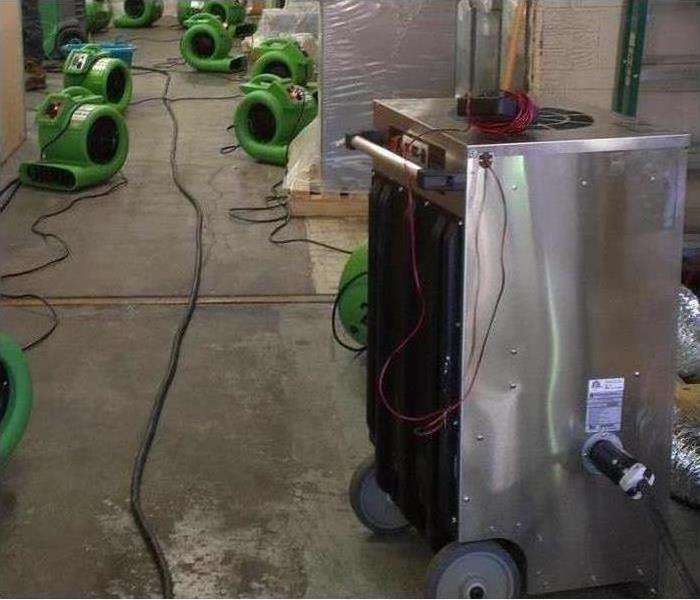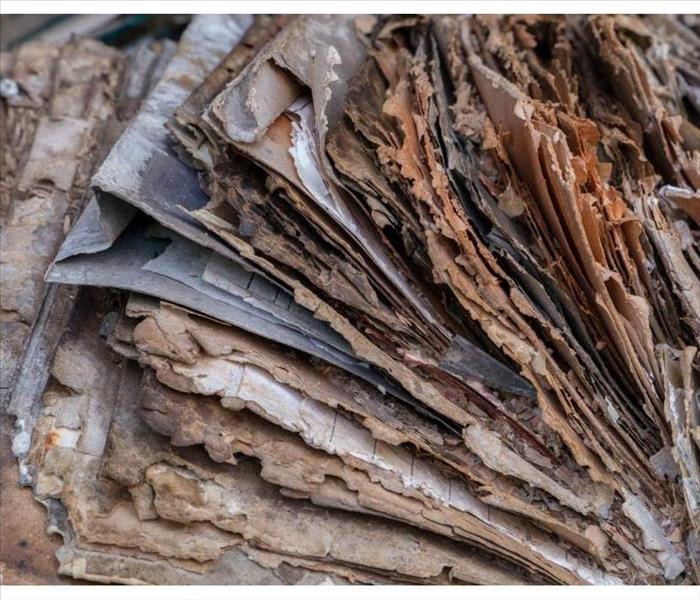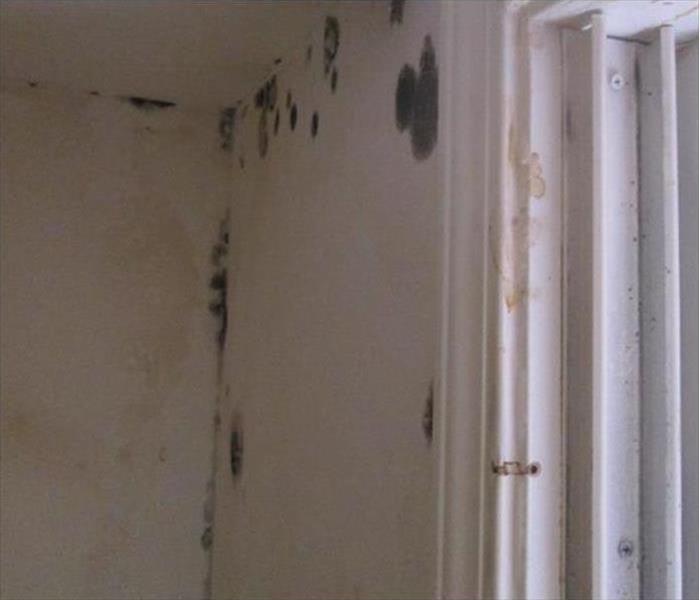Archived Why SERVPRO Blog Posts
We do Content Cleaning and Storage
8/14/2024 (Permalink)
The Ultimate Guide to Content Cleaning and Storage: How SERVPRO® Keeps Your Belongings Safe
When disaster strikes—whether it's a fire, flood, or mold invasion—your first concern is often the safety of your family and home. But what about the belongings inside? From cherished family heirlooms to important documents and everyday items, the contents of your home are just as important as the structure itself. This is where SERVPRO’s expert content cleaning and storage services come into play.
What is Content Cleaning?
Content cleaning is the process of restoring personal belongings that have been affected by a disaster. This can include anything from smoke-damaged clothing to waterlogged furniture. The goal is to clean and restore these items to their pre loss condition, whenever possible.
At SERVPRO, we understand that not all items can be easily replaced. That’s why our highly trained technicians use specialized cleaning techniques and state-of-the-art equipment to ensure the highest level of care for your belongings.
The Content Cleaning Process
1. Assessment: The first step in content cleaning is a thorough assessment of the damage. Our team will evaluate each item to determine if it can be restored or if it needs to be replaced. This includes taking an inventory of all damaged items.
2. Pack-Out: In many cases, the best way to protect your belongings during the cleaning process is to remove them from the damaged environment. This is known as a "pack-out." SERVPRO’s team carefully packs and transports your items to our secure facility, ensuring they are handled with the utmost care.
3. Cleaning: Once at our facility, items are cleaned using various methods depending on the type of damage. For example, items affected by smoke may undergo deodorization, while water-damaged items may require drying and disinfection. We use advanced cleaning technologies such as ultrasonic cleaning for delicate items and dry cleaning for fabrics.
4. Restoration: After cleaning, some items may require additional restoration, such as refinishing furniture or repairing electronics. SERVPRO works with trusted specialists to ensure that your belongings are returned to you in the best possible condition.
5. Storage: While your home is being restored, you may not have a safe place to keep your belongings. SERVPRO offers secure storage solutions to keep your items protected until they can be returned to your home. Our storage facilities are climate-controlled and monitored 24/7 to ensure the safety of your belongings.
Why Choose SERVPRO for Content Cleaning and Storage?
Expertise: Our technicians are trained in the latest cleaning and restoration techniques, ensuring that your belongings are in capable hands.
State-of-the-Art Equipment: We use the most advanced equipment and cleaning solutions available, allowing us to restore even the most delicate items.
Comprehensive Service: From initial assessment to final delivery, we handle every step of the process, so you don’t have to worry about a thing.
Compassionate Care: We understand that dealing with the aftermath of a disaster can be overwhelming. Our team is committed to treating your belongings with the same care and respect as if they were our own.
When disaster strikes, the safety of your home and belongings is paramount. SERVPRO’s content cleaning and storage services are designed to give you peace of mind during a difficult time. By trusting us with your most cherished possessions, you can focus on what truly matters—getting your life back to normal.
If you’re in need of content cleaning or storage services, don’t hesitate to contact SERVPRO. We’re here to help 24/7, providing expert care when you need it most.
4 Steps for Writing a Business Continuity Plan
7/24/2022 (Permalink)
 Business Continuity Plan
Business Continuity Plan
Planning for your business in Santana Row, CA, is always a good idea, especially in an emergency. Find out below how to make an emergency plan and why you need one.
How Do I Create a Business Continuity Plan?
It is like working on a giant puzzle: you already know some important details; the process will help you fill in the rest.
1. Make a Business Impact Analysis
A BIA shows how various scenarios will impact the essential functions of your business. Think about supply chain disruptions and other external consequences as much as internal ones like loss of revenue.
2. Decide on Recovery Options
You should know what it will take to recover and what is currently available. Strategize your recovery methods and select the best to implement.
3. Team Up
Create a team to help develop your plan. You will also have to create an emergency personnel structure showing roles and responsibilities. Also, think about running operations manually if your IT department is offline.
4. Test and Exercise Your Plans
You need to test your plans to know if they will work. Testing might mean running your fire alarms or tornado sirens. Full-scale exercises like tornado drills ensure everyone knows where to go and can include timing them to see how long it takes.
What Is a Business Continuity Plan?
It is a plan for what you and everyone that works for you need to do to keep the business running as normally as possible in case of an emergency.
Why Do I Need a Business Continuity Plan?
Without continuity plans, as many as 75% of companies fail within three years. Having a plan means your company is more likely to recover when a disaster strikes.
Having an emergency response plan is crucial for your business when disasters happen.
Roof Leaks and Mold: Your Top Questions Answered
3/31/2022 (Permalink)
 A leaking roof can lead to mold damage.
A leaking roof can lead to mold damage.
Roof Leaks and Mold
The last thing you want to worry about is a leak in your building’s roof. If the leak is small, it can be tempting to stick a bucket under the leak and put off the repairs. Don’t give in to this temptation! A leaky roof can lead to all kinds of problems in a short time, such as black mold, swollen wood, and soggy sheetrock. The answers to the following common questions hold the clues to avoiding a moldy, leaky mess in your Los Gatos, CA, building.
1. How Long Does It Take for Mold To Start Growing?
Mold spores are always present in the air, both outside and in your building. These spores remain dormant while they are airborne. When the spores land on a moisture source, such as a ceiling leak, they begin to feed and reproduce. Since the spores are already present in the air, you don’t have much time after even a small leak before the spores become active. Black mold spores typically become actively growing mold within about 24 hours after the leak begins.
2. How Can I Prevent Mold From Forming?
The key to avoiding a mold infestation is to act quickly as soon as you discover a roof leak. Try to identify resolve the source of the leak, to stop any more water from entering. Use towels or a shop vacuum to dry surfaces as thoroughly as you can. A dehumidifier may also help. If the leak is large, or if you can’t easily identify the source, contact a professional contractor as soon as possible.
3. What If Mold Has Already Appeared?
If the leak has existed for some time before you noticed it, don’t waste time: Contact an experienced mold remediation company right away. DIY cleanup efforts are often ineffective, and mold will continue to multiply in the meantime.
Don’t let a leaky roof turn into a black mold nightmare for your building. Understanding the mold growth cycle and acting quickly when you discover the leak will save you time and money.
3 Ways Restoration Professionals Assist Insurance Adjusters
3/25/2022 (Permalink)
 Storm restoration services in Campbell, CA.
Storm restoration services in Campbell, CA.
Restoration Experts Assist Insurance Adjusters in Three Ways
Successful storm restoration depends on collaboration between restoration professionals and insurance representatives. The ready availability of damage documentation and accurate estimates can accelerate the claim settlement process. Whether you are an insurance agent or own property in Campbell, CA, you should be aware of three areas in which insurers and restoration experts can work together to provide the most efficient and effective disaster response services.
1. Restoration Teams Arrive Sooner
Restoration franchises often have the resources necessary to arrive on-site for storm response in less time than insurance representatives. Insurance agents and adjusters may be slowed down by the number of clients reporting damage in an area. Franchises that are part of a large corporate network can readily obtain the staff and resources that are necessary to meet spikes in demand.
2. Restoration Experts Document Damage
Documentation is another area in which restoration professionals can assist insurance representatives with storm restoration. These experts know exactly what to look for in a residential or commercial property that has sustained damage from a storm and can take photos, record videos and make lists of partial and total losses to make insurance adjusters’ and agents’ jobs easier.
3. Mitigation Starts As Soon As Possible
Once the damage has been documented, a restoration team can start taking measures to mitigate flood damage. Pumping out water sooner rather than later may limit the severity of primary damage and prevent secondary damage, such as mold. The first 24 to 48 hours after damage occurs are crucial for successful restoration.
In the event of a major storm that causes large-scale losses, insurance representatives will be tasked with inspecting damage at many properties in Campbell, CA. The ability to rely on a preferred storm restoration vendor to document damage and calculate an accurate estimate of restoration expenses can expedite mitigation in the short term and eventually claim settlement.
Restoring Documents After Water Damage
2/26/2022 (Permalink)
 Your clients may be able to salvage documentation that was damaged.
Your clients may be able to salvage documentation that was damaged.
Document Restoration After Water Damage
When a client's property suffers storm damage, it may be on more than just building. A document restoration service like that offered by a local SERVPRO in San Jose, CA, can help your client get back on track. Documentation can include everything from account statements to invoicing, and the ability to salvage these can help save valuable time and money.
Services Offered
A professional restoration service can offer a number of ways to recover your client's documentation. These may include
- Freeze-drying
- Cleaning
- Gamma irradiation sterilization
- Digitizing
- Deodorizing
Depending on damage type, these processes can be utilized to restore a variety of damage documents, including X-rays and photographs.
Technology Used
The process of document restoration involves the use of modern technology. Gamma irradiation is used to sterilize the documents without causing further harm. The documentation can then be freeze-dried which is a process approved by the National Archives. Your client can trust that their paperwork will not only be in safe hands but can be restored. Taking advantage of additional services, such as digitization, may offer further benefit.
Additional Services
In addition to document drying, SERVPRO offers several other services your clients may be interested in. They can also offer digitization services. This is the process of converting documentation into an electronic form so it can be stored on a server safely out of harm's way.
With a document restoration service, your clients may be able to salvage documentation that was damaged along with their other property. A restoration team can use the latest technology to help get these important pieces of paperwork in order. They may also be able to digitize the documentation allowing for it to be backed up on to server, to help prevent any further loss. If you have any questions about what the service can do for your clients, a restoration professional may be able to help.
Top Reasons Homeowners Insurance Won’t Pay for Your Mold
1/30/2022 (Permalink)
 Black mold damage in a home in Los Gatos, CA.
Black mold damage in a home in Los Gatos, CA.
Top Reasons Why Your Mold Isn't Covered by Your Homeowners Insurance
You’ve kept your home in tip top condition but mold has still reared its ugly head. Fungus happens to even the most meticulous of homeowners, but fortunately you have mold coverage, right? This is an assumption that many Los Gatos, CA, homeowners have learned is incorrect only after being saddled with major bills. The truth is, with little exception, most homeowner’s insurance doesn’t cover fungus growth. Here are a couple of the top reasons why.
How costly is mold removal?
Getting rid of mold is no small task, and that’s one reason insurance companies are reticent to cover it. Repairs can run up to $6,000 and then some. That estimate includes things like:
- Inspections
- Air quality tests
- Remediation
- Restoration
If you’re expecting your homeowner’s insurance to pay for all of this, think again. Here’s why.
It’s Not a “Covered” Peril
On average, a homeowner’s policy pays for fungus growth damage caused by a “covered peril.” Such perils are events that are already covered in the policy, and typically include fire, lightning and vandalism – unlikely causes of mold!
You Caused the Damage
If mold resulted from something you did, your policy won’t cover it. Leaving around wet towels and other materials, resulting in a mold infestation is one example. Another is if a preventable water leak or other maintenance failures led mold to flourish.
It’s Flood-Related
A natural disaster like a flood might seem like a covered peril, and such events can indeed be covered, just not by a standard policy. Flood damage is typically covered by a flood policy separate and apart from typical homeowner’s insurance. That damage can include mold.
Knowing what your homeowner’s insurance will and won’t cover when it comes to fungus growth is key to being prepared. Speak to an insurance expert about mold insurance and mold remediation to learn how to get the protection you deserve.






 24/7 Emergency Service
24/7 Emergency Service




